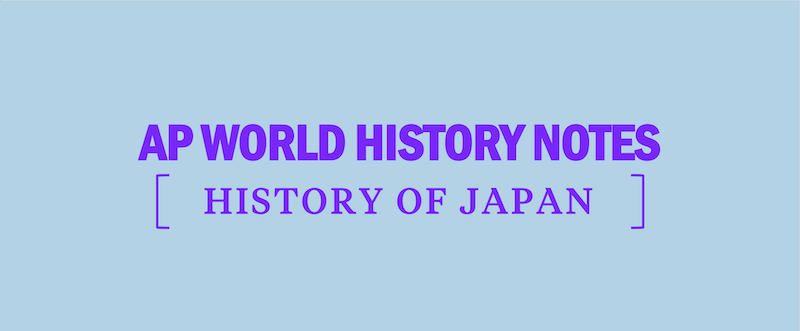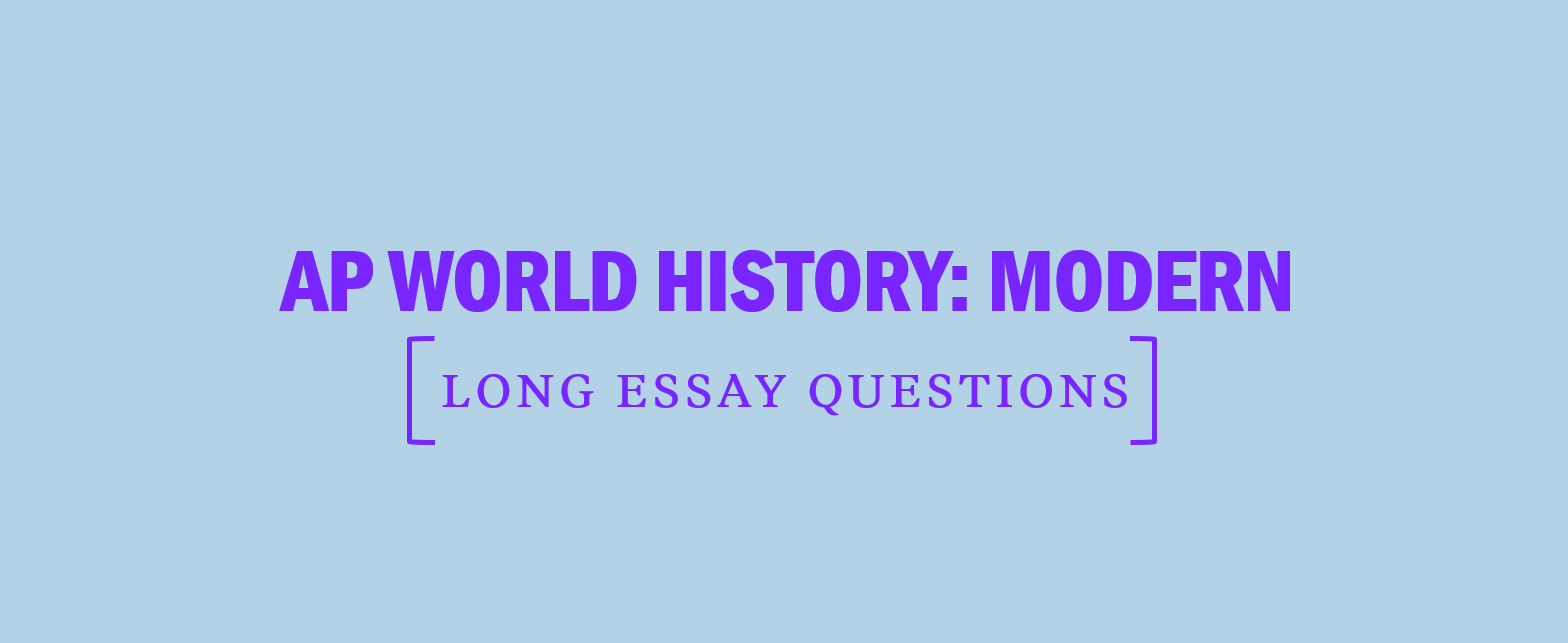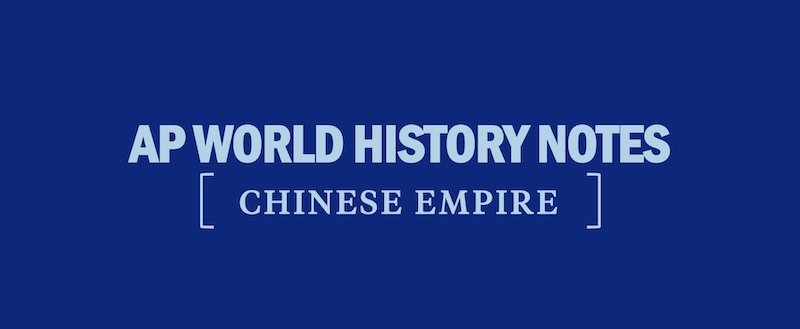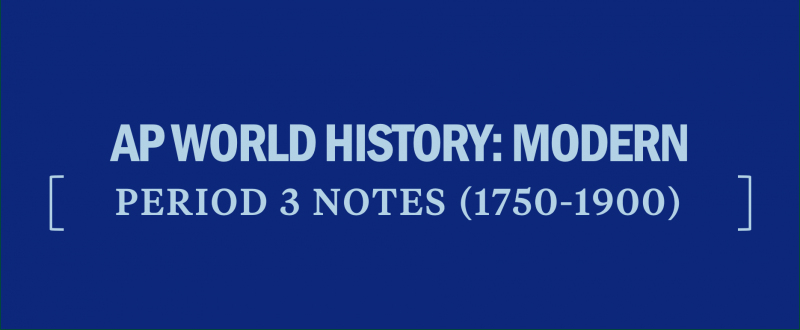History of Japan — AP World History: Modern Notes
Knowing the history of Japan as an individual nation and as a contributor in world events is absolutely necessary for success on the AP World History: Modern Exam. Read on for key events and periods in Japanese history, and check out our Civilizations in Asia post for info about other ancient Asian civilizations.
Table of Contents:
- Tokugawa Shogunate
- The Meiji Restoration: Japanese Reform
- Japanese Imperialism
- Japanese and East Asian Political Reform of the Twentieth and Twenty-First Centuries
History of Japan: Tokugawa Shogunate
Tokugawa Ieyasu established the Tokugawa Shogunate in 1600, after a period of civil war that began in 1467. Fighting had broken out among various daimyo (warlords) over succession of the shogun, the supreme military leader of Japan. Ieyasu hoped to stabilize the country and end the unrest by increasing his control over the daimyo. He required that they spend every other year at the capital, Edo (now Tokyo), where he could more easily monitor them and prevent rebellion.
Relationships with the outside world became closely controlled. Japanese were forbidden from going abroad and from constructing large ships. Europeans were expelled from Japan, and foreign merchants were not allowed to trade in Japanese ports—the only exception was a small number of Chinese and Dutch ships. Despite all these restrictions, the Japanese economy grew, as agricultural production increased and the population grew. In this comparatively peaceful era, the samurai warrior class took on more administrative responsibilities.
Catholicism had made some important inroads in Japan by 1580, with over a hundred thousand Japanese converts, but the government ended these missions and outlawed the religion. The government even went as far as to torture and execute the missionaries who did not leave, as well as the Japanese Catholics who did not renounce their religion. Dutch merchants continued to be the principal source of information about Europe during this time, keeping the Japanese up-to-date with important scientific and technological developments. Knowledge gleaned from the Dutch became termed “Dutch learning” in Japan.
The Meiji Restoration: Japanese Reform
In its radical response to the challenges of reform and reaction, Japan emerged from this period as a world power. Even as it continued to selectively isolate itself from the rest of the world, it was changing from a feudal to a commercial economy.
The Japanese knew of China’s humiliation at the hands of the British in the mid 1800s. After the California Gold Rush of 1849, the United States became more interested in Pacific commerce, sending a mission to conclude a trade agreement with Japan. Commodore Matthew Perry, in an example of gunboat diplomacy, arrived in Edo (Tokyo) Bay in 1853 with a modern fleet of armed steamships. For the Japanese, who had restricted their trade from much of the world for over two centuries, this was a troubling sight. Contact with Americans caused tense debate within the ruling Tokugawa shogunate and the samurai class.
Two clans in the south—Satsuma and Choshu—supported a new policy to “revere the emperor and repel the barbarians.” This was a veiled critique of the shogun in Edo, as they perceived his inability to ward off the Western “barbarians” as embarrassing. A younger generation of reform- minded samurai far from Edo made bold plans to undermine the bakufu (the military government led by the shogun). These “men of spirit” banded together to overthrow the shogun, restore the emperor, and advance the idea of Japanese modernization.
The rebels armed themselves with guns from the West, and a civil war broke out in 1866. When the anti-government forces demonstrated their military superiority, the momentum began to shift in favor of the rebels. The overthrow of the Tokugawa shogunate was complete in 1868, when the victorious reformers pronounced that they had restored the emperor to his throne. His title was Meiji, or Enlightened One. The nation rallied around the 16-year-old emperor, and plans were made to move the imperial “presence” to the renamed capital of Tokyo (Eastern Capital). This transition in Japanese history can be seen as both a restoration and a revolution. While the emperor was nominally restored to authority, real power was held by the nobility. A national legislature called the Diet was established, but the aristocratic upper house was in primary control. It reformed Japan in radical ways. Compulsory public schools were introduced. The feudal system was abolished, and the ownership of weapons was no longer restricted to the samurai class.
Some samurai were displeased, not just with the loss of their privileges, but also with the mass adoption of “barbarian” ways by Japan. The resulting Satsuma Rebellion (1877) saw traditionalist samurai launch a brief civil war. Both sides fought with modern weapons, however. In the end, the government’s army of peasant conscripts defeated the rebels.
The rapidity of the industrialization and modernization of Japan impressed the rest of the world. This development was driven, in part, by the zaibatsu (“financial cliques”), which were family-owned business conglomerates that dominated the economy. Within the first generation of the Meiji period, Japan had built a modern infrastructure and military, had defeated the Chinese and Russians in war, and had begun building an empire in the Pacific. The rise of imperial Japan altered the global balance of power as the twentieth century began.
History of Japan: Japanese Imperialism
Because Japan was so strengthened by government-sponsored industrialization, it was able to compete on the level of the major imperial powers. The First Sino-Japanese War (1894–1895) was sparked by a rebellion in Korea. Japan quickly defeated the Chinese fleet and was ceded Taiwan, the Pescadores Islands, and the Liaodong peninsula. China was forced to sign unequal treaties with Japan as it had with the Western powers. In 1910, Japan annexed Korea.
Japan’s victory in the Russo-Japanese War (1904) is, however, the most notable globally. The war solidified Japan’s international position. As the first time a non-European people had defeated a major Western power, it inspired anti-colonial activists across the world from Vietnam to Ireland. It also offered inspiration to states under threat of foreign encroachment, such as the Ottoman Empire.
Japanese and East Asian Political Reform (1900’s-2000’s)
For seven years following World War II, Japan was governed by a U.S.-dominated occupation that imposed a liberal constitution, land reforms, and a new education system. The goal was to make Japan more Western-oriented and economically strong, both to prevent a revival of militarism and to defend against communism in East Asia. Rather than allow a rebuilt military capable of new aggression, the United States offered a defensive alliance under its own naval and air forces. At the same time, the European empires in Southeast Asia were disappearing, along with their closed trade systems. America promoted free trade and access to other countries’ resources.
With these crucial changes from the prewar world, Japan was able to develop an export economy of manufactured goods, with a strong focus on technology. By the 1970s, Japanese corporations and banks were world-class competitors with European and American enterprises, and Japan had rebuilt itself as a solidly united and wealthy member of the First World, the only country from Asia with such global influence until South Korea gained comparable prominence in the 1990s.
In similar ways, several smaller nations used Japan’s approach to build themselves into economic powerhouses. Taiwan, Singapore, Hong Kong, and South Korea lacked natural resources or large territories, but they invested in infrastructure and human capital in order to become advanced industrialized countries or city-states.
In the early 1990s, Japan’s economy formed a speculative bubble that, when it burst, caused a contraction that lasted almost 10 years. The “Lost Decade” was made worse by a rapidly aging demographic profile. Other East Asian economies, including not just the four above but also Australia, Thailand, Vietnam, Indonesia, the Philippines, and especially China, grew at faster rates in the 1990s; eventually, though, they too suffered a financial crisis in 1997.
In the twenty-first century, Japan has struggled with lingering economic issues, the lack of inclusion of women in its workforce, and a shrinking population in an aging country. While Japan maintains a position at the forefront of global popular culture, it is increasingly sharing the stage with nations like South Korea and Indonesia. Geopolitically, the key issue for East Asia in the twenty-first century is the great power jockeying between China and the United States, as well as the situation in North Korea, which developed nuclear weapons in 2006.




